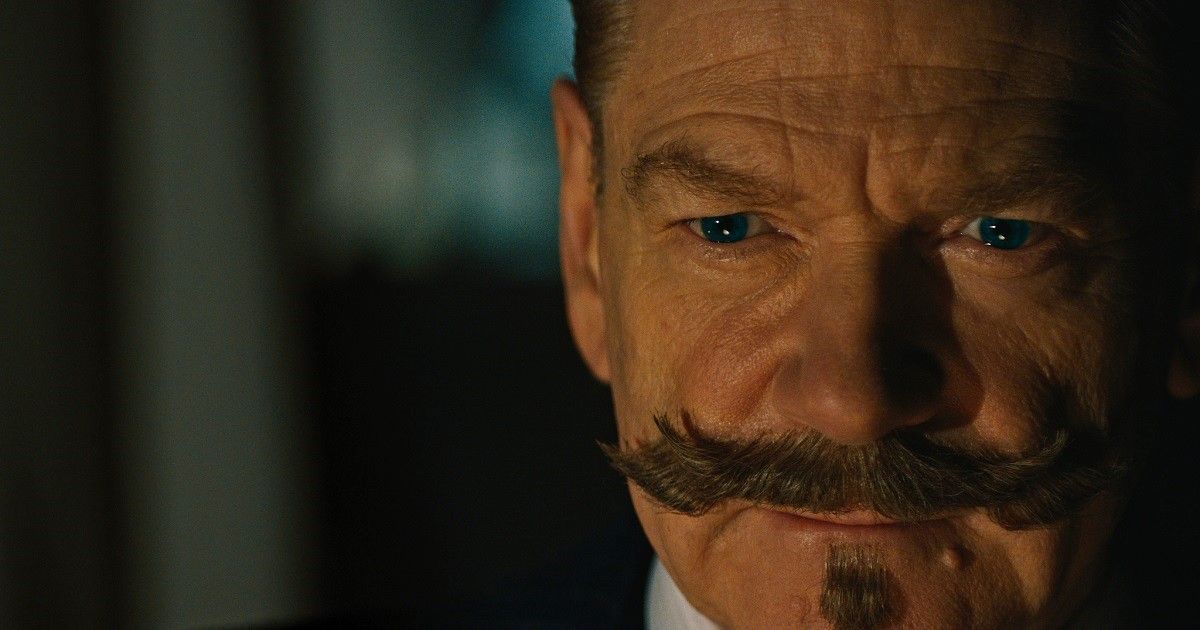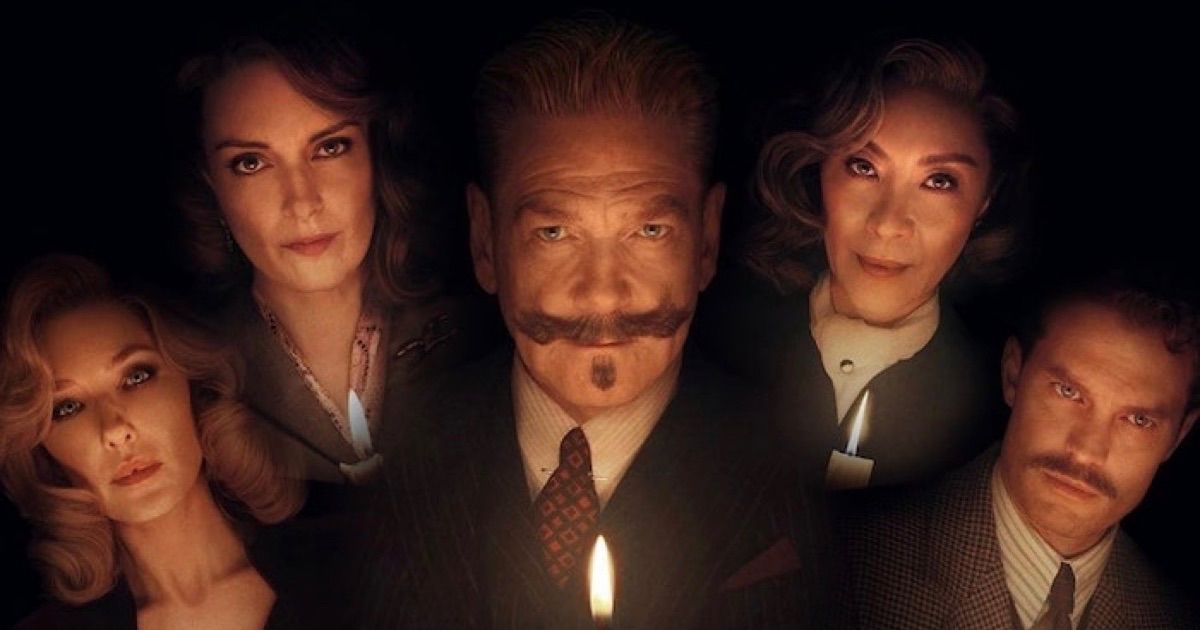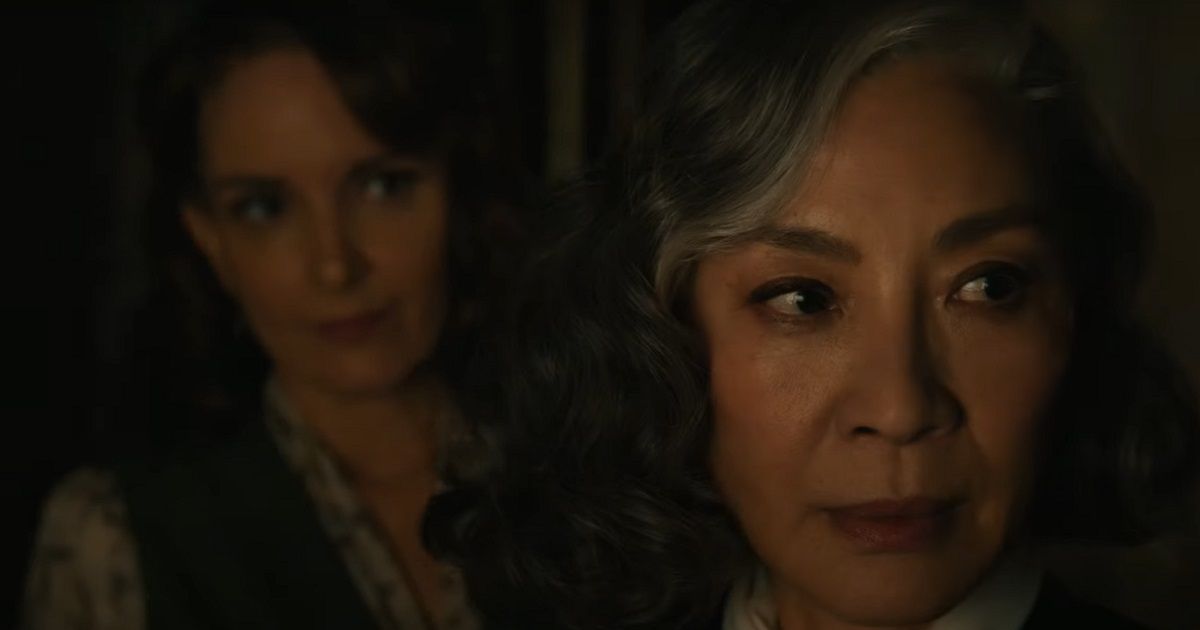A Haunting in Venice, the third installment in Kenneth Branagh’s Hercule Poirot film series, marks a turning point for the film series, as while the first installment, Branagh’s 2017 remake of Murder on the Orient Express, was a box office success, the previous entry, Death on the Nile, was one of the biggest box office flops of 2022.
Unlike Branagh’s remakes of Death on the Nile and Murder on the Orient Express, A Haunting in Venice is based on Agatha Christie’s previously un-filmed 1969 Poirot novel Hallowe’en Party, and the supernatural-themed A Haunting in Venice clearly represents an attempt, after the failure of Death on the Nile, to appeal to a broader and younger audience, including horror fans.
Indeed, with A Haunting in Venice, Branagh has made a gothic horror film in which Branagh’s legendary Belgian detective Poirot visits a supposedly haunted mansion, where Poirot witnesses a Halloween-night séance, has ghostly visions of dead children, and, of course, attempts to solve a murder, as an accumulation of seemingly supernatural occurrences challenges Poirot’s once unbreakable faith in logic and science.
Moreover, if A Haunting in Venice is successful enough to inspire a fourth Poirot film adaptation, Branagh has plenty of material to choose from, as Poirot is featured in thirty-three Christie novels and fifty-one short stories.
The Next Poirot Film
Murder on the Orient Express, Kenneth Branagh’s 2017 remake of the 1974 film of the same name, marked the first film adaptation of a Hercule Poirot novel since Appointment with Death, the 1988 film adaptation of Agatha Christie’s 1938 novel of the same name, which was preceded by Evil Under the Sun, the 1982 film adaptation of Christie’s 1941 novel of the same name.
Since Branagh and his creative partner in Branagh’s Poirot film series, screenwriter Michael Green, decided to follow Murder on the Orient Express with Death on the Nile, the 2022 remake of the 1978 film of the same name, it seems logical that if Branagh and Green were to follow A Haunting in Venice with another remake, they would continue to move in chronological order and remake either Appointment with Death or Evil Under the Sun.
In the 1982 adaptation of Evil Under the Sun, Poirot, played by Peter Ustinov, investigates the strangulation murder of a despised stage actress on a seemingly idyllic vacation island in the Adriatic Sea, while in the 1988 film adaptation of Appointment with Death, Poirot, again played by Ustinov, investigates the murder of an evil stepmother who is found dead at an archeological dig near the Dead Sea.
The first Poirot film adaptation, based on Christie’s acclaimed 1926 novel The Murder of Roger Ackroyd, is the now lost 1931 detective mystery film Alibi, in which Poirot, played by Austin Trevor, investigates a suspicious suicide at a countryside estate.
Expanding the Agatha Cinematic Universe
Given that A Haunting in Venice is based on Agatha Christie’s only supernatural-themed Hercule Poirot novel, Hallowe’en Party, it will be difficult for Kenneth Branagh to find another Poirot novel with which Branagh can replicate this formula, assuming that the supernatural approach that Branagh took with A Haunting in Venice proves to be so popular with audiences that Branagh is virtually compelled to repeat this approach with a fourth Poirot film.
However, if Branagh wants to adapt another Poirot novel that hasn’t previously been made into a film, there are several intriguing possibilities to choose from, such as the 1920 Poirot novel The Mysterious Affair at Styles, Christie’s debut novel, in which Christie introduces Poirot as a Belgian World War I refugee who, as the novel opens, is attempting to settle in England with the kindly assistance of an elderly, wealthy woman who is subsequently murdered.
Christie’s 1936 Poirot novel Cards on the Table opens with Poirot attending an art exhibition, where he meets Mr. Shaitana, a flamboyant, mysterious collector and crime buff who invites Poirot to a dinner party, where Poirot encounters crime writer Ariadne Oliver, in their first meeting, along with British Secret Service agent Colonel Race, Superintendent Battle of Scotland Yard, and four other guests, each of whom Shaitana believes is guilty of murder.
In the 1942 Poirot novel Five Little Pigs, which is regarded by many Christie scholars as being one of her best novels, Poirot investigates five people about the sixteen-year-old poisoning murder of a man whose wife was wrongfully convicted of his murder and subsequently died in prison, where the wife, in her final letter, proclaimed her innocence to her daughter, who asked Poirot to reinvestigate the case.
The Ariadne Oliver Mysteries
In A Haunting in Venice, Kenneth Branagh’s Hercule Poirot is joined by a major supporting character from Agatha Christie’s Poirot novels, mystery novelist Ariadne Oliver, Poirot’s close friend and unofficial sidekick, who made Poirot, and herself, famous by fictionalizing Poirot’s various adventures.
In the film, Oliver, played by Tina Fey, attempts to bring the jaded and reclusive Poirot out of his self-imposed isolation by asking Poirot to accompany Oliver to a Halloween night party and séance at the aforementioned mansion, as Oliver hopes that Poirot will help her expose a famed psychic medium who Oliver believes is a fraud.
Moreover, while A Haunting in Venice clearly sets the stage for an enduring cinematic murder-solving partnership between Oliver and Poirot, and as Oliver is featured in five other Poirot novels, beyond Hallowe’en Party, it seems likely that the next Poirot film will be based on one of these remaining Oliver-Poirot novels.
This story originally appeared on Movieweb



